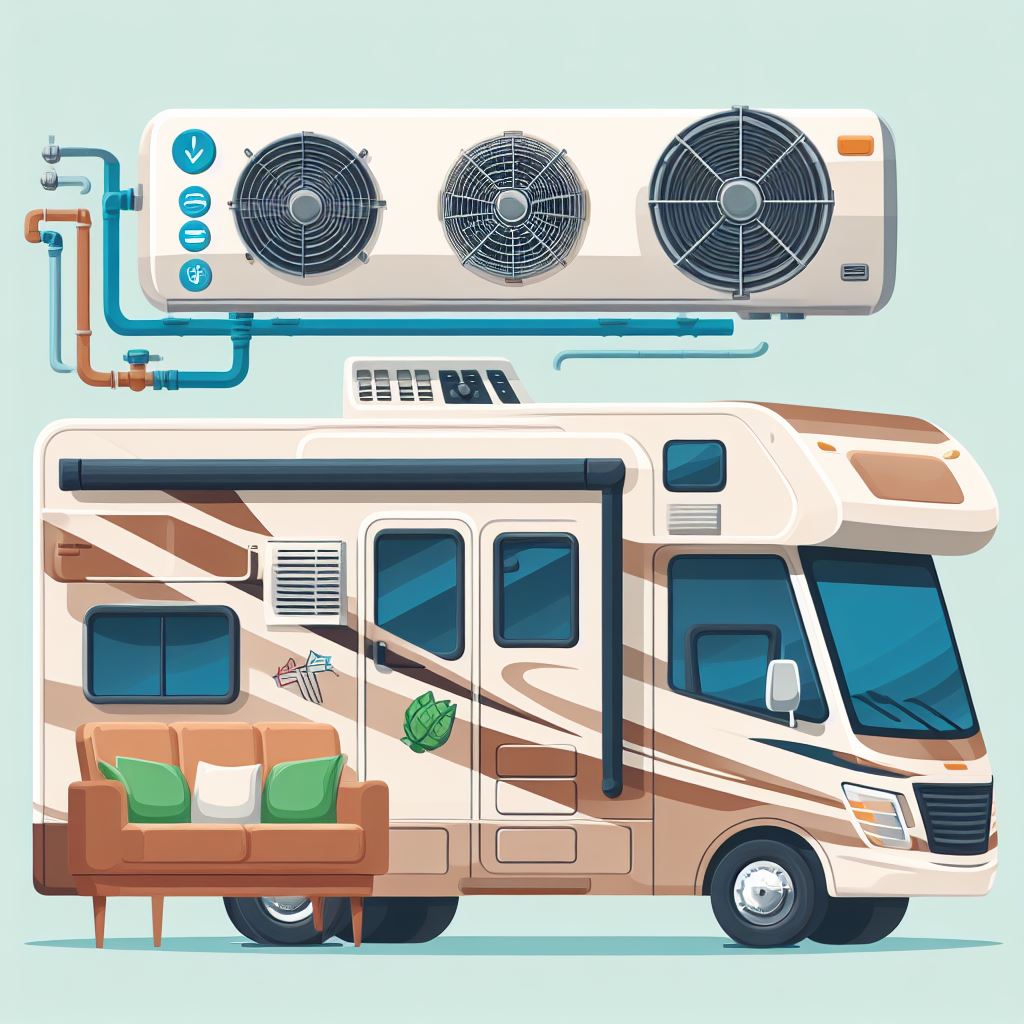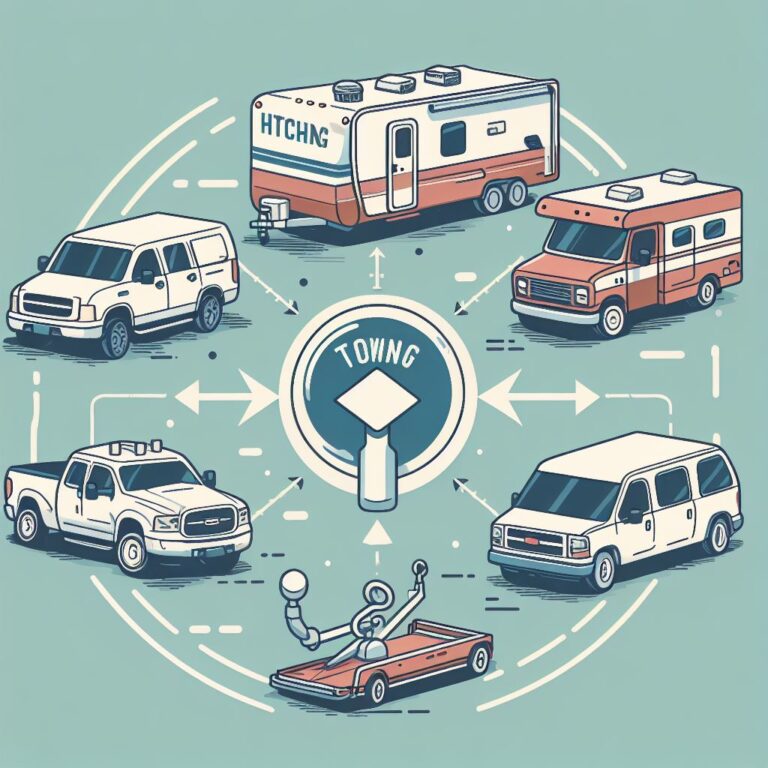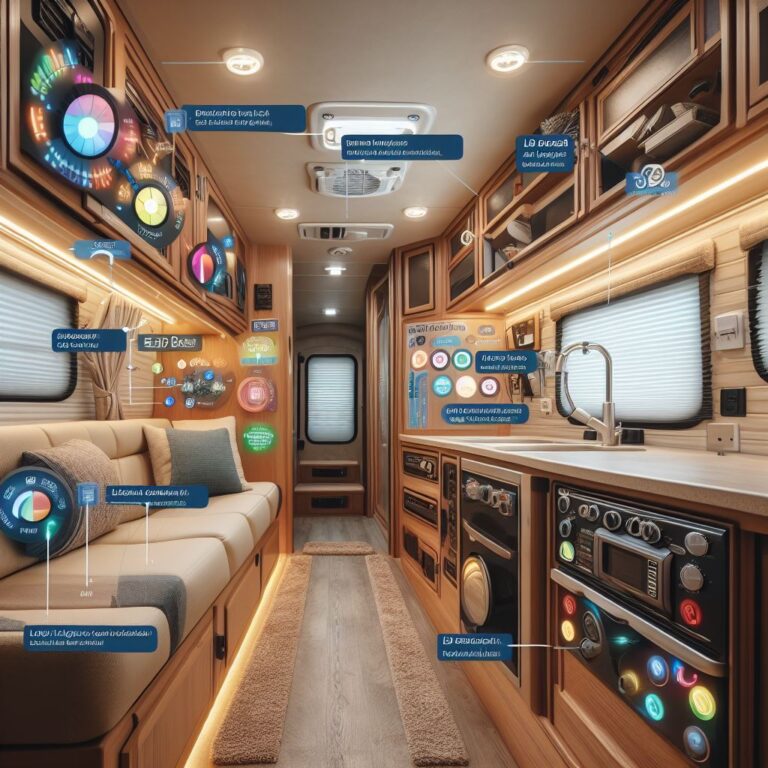How To Choose RV Heating, Ventilation & Air Conditioning
Understanding the Importance of Proper HVAC in an RV
Recreational vehicles (RVs) provide a compact living space, often including beds, a kitchen, a bathroom, and of course, heating, ventilation, and air conditioning (HVAC) systems. These systems are critical for maintaining a comfortable and stable temperature inside the RV, particularly when traveling in extreme weather conditions. The HVAC system ensures that the inside of the vehicle stays warm during colder climates and cool during hotter weather, thereby guaranteeing a comfortable journey or stay, irrespective of the external temperature volatility.
In addition, the HVAC system in an RV plays a crucial role in maintaining air quality. With limited ventilation and an often compact living space, indoor air quality can become compromised and potentially harmful. HVAC systems filter out dust, allergens, and other pollutants from the air, reducing the risk of respiratory issues and allergies, ensuring healthier living conditions. Ventilation also helps to prevent condensation build-up, which could otherwise lead to mold growth and structural damage. Therefore, a properly functioning HVAC system is essential not only for comfort but also for health and safety while in an RV.
Assessing Your RV’s Current Heating and Cooling Systems
Before embarking on any journey, it’s crucial for RV owners to evaluate their current heating and cooling systems. This process not only ensures comfort while on the road but also plays a major role in maintaining the longevity and overall performance of the RV. As part of this assessment, the current state of your system’s components – such as air filters, vents, and thermal insulation – should be carefully examined to guarantee they are in good working condition. The functionality of thermostatic controls should also not be overlooked, as they contribute significantly in maintaining a consistent temperature inside the RV, which aids in reducing energy consumption.
A comprehensive understanding of how well your RV’s heating and cooling system is functioning also depends on an evaluation of its efficiency. This includes the system’s ability to maintain a desirable temperature, its response time in changing the internal temperature according to the external environment and how economically it utilizes energy. To gain an objective measure of these parameters, utilizing HVAC professionals who have a deep understanding of RV specific systems can be quite beneficial. Moreover, tools like infrared monitors can also be employed to monitor cold and hot spots within the RV, thus helping identify places of heat loss or inadequate cooling, thus informing future maintenance needs or device replacements.
Types of RV Heating Systems: Pros and Cons
The variety of heating systems available for recreational vehicles (RVs) stand as a testament to the diverse requirements and preferences of RV enthusiasts. Some travelers prefer the old-fashioned but reliable propane furnace, while others value the efficiency and compactness of a heat pump. Furnaces, which remain popular amongst many, benefit from their capacity to provide a robust heating source, even in extreme cold. However, their dependence on propane means occupants must monitor their fuel levels, especially in colder climates.
On the other hand, heat pumps, which function by extracting heat from outside and pumping it inside, have gained traction for their energy efficiency. They require minimal monitoring and use electric power which is abundantly available in most RV parks. However, one notable shortcoming of heat pumps is their inability to function effectively in freezing conditions. This characteristic makes them less ideal for travelers who frequent colder regions. Despite these boundaries, the choice of heating system ultimately depends on the individual RV owner’s unique journey and climate requirements.
Exploring Different RV Air Conditioning Options
When choosing an air conditioning option for your RV, there are several types to consider. Rooftop units are the most common, boasting a compact design that frees up valuable interior space in your vehicle. These units provide high performance cooling and are generally easy to install. However, they are located outside the vehicle, making them more susceptible to damage from inclement weather.
Portable RV air conditioners offer another viable alternative, requiring no installation and providing the flexibility to customize cooling for each part of your RV. While these units are conveniently mobile, their cooling capacity is limited and they can take up precious interior space. Furthermore, they need to be properly vented, an essential requirement often missed, causing inefficient cooling and high energy usage.
Ventilation Systems in RVs: What You Need to Know
Ventilation systems in recreational vehicles (RVs) serve essential functions beyond merely bringing fresh air into compact spaces. They play a vital role in controlling the internal temperature, circulation of clean air, and the prevention of moisture build-up, which is crucial in averting problems like mold and mildew. High-quality ventilation systems use fans and vents strategically placed to create proper airflow, thus making the RV’s environment both comfortable and safe to inhabit.
Product options range from simple, manually-operated roof vents to more complex, remote-controlled fan systems equipped with rain sensors or thermostats. Some designs integrate insulated covers for additional temperature control, or insect screens which prevent unwanted pests from getting inside while providing ample ventilation. It is also worth noting that proper ventilation helps to keep appliances running efficiently by dispersing heat and preventing damage from overheating. Therefore, understanding your RV’s ventilation system is paramount for ensuring a comfortable and secure journey.
Key Factors to Consider When Selecting a Heating System for Your RV
The selection of an ideal heating system for your RV should begin with an accurate assessment of your heating needs based on the geographical areas you plan to travel. Whether you are bracing for the frosty conditions of an Alaskan winter or preparing for a mild winter in Southern California, your heating system needs will vary drastically. A large RV
will also require a more powerful system than a smaller one, so take into account the square footage you’ll need to heat.
Another significant factor is the energy efficiency of your prospective heating system. Energy efficiency impacts not only the cost of running the heater but also how much fuel space you’ll need to allocate. Opting for an energy-efficient model may have a higher upfront cost, but it could save you money in the long run. Furthermore, consider the noise level of the heating system. A quieter system might be more appreciated, especially during the night. Your safety during RV trips is not negotiable, so ensure the heating system meets all safety standards and regulations. You will not want to contend with toxic emissions or fire hazards while enjoying your RV trip.
Choosing the Right Air Conditioning Unit for Your RV
Selecting the appropriate air conditioning unit for your RV involves several factors that need close attention. First and foremost, consider the size of your RV. A larger RV may require a more substantial air conditioning unit or possibly even two units, to sufficiently cool the entire space. The power capacity of your RV is also another important consideration, as different air conditioning units will require varying levels of power output to function effectively.
On the other hand, the type of traveling you do may impact your choice. If you tend to stay at campsites with full utility hookups, you may choose a robust, high-powered unit. However, if you prefer boondocking or off-grid camping, a lower-powered or even a solar-powered air conditioning unit may be a better fit. Similarly, the climate plays a role as well. If you predominantly travel in milder climates, a less powerful unit could suffice whereas in hotter climates, a stronger AC unit will be essential. Indeed, every attribute of your traveling routine should influence your selection.
Ventilation Options for Your RV: Making the Right Choice
Ventilation in recreational vehicles (RVs) is crucial for maintaining a comfortable and healthy indoor environment. The circulating fresh air can assist in combating issues like foul odors, high humidity levels, and stove fumes. Besides removing undesirable elements, it also ensures the longevity of the RV interior by reducing condensation that could cause mildew and rot over time.
When considering ventilation options, it’s important to assess your specific needs. For some RV owners, roof vents prove to be sufficient and are usually installed as standard by the manufacturer. These vents allow for the escape of hot air and introduce cooler air from outside. However, if you’re planning to spend time in extremely hot climates or if your RV lacks enough windows for adequate cross ventilation, an RV-specific air conditioning unit or powered vents will be a wise investment. These could not only enhance the airflow but also effectively cool down the interior space in a short span of time.
Installation Process for RV HVAC Systems
Embarking on the intricate installation process of an HVAC system in an RV requires careful planning and a good understanding of various components involved. The initial step must involve a thorough evaluation of your recreational vehicle’s structure and size, as this will determine the kind of heating, ventilation, and air conditioning (HVAC) system that will work best. Key considerations should include the availability of space for a ductwork system and the power source which your motorhome uses, as some RV HVAC systems are better suited to particular energy sources.
Once the type of design is selected, an installation spot needs to be identified, with most RV owners choosing rooftops due to easily accessible ductwork. Special attention should be given to proper sealing of the unit into the opening to avoid potential leakages later. The next step involves connecting the selected HVAC system to the RV’s power source and ensuring that all the controls and thermostats function optimally. Remember, professional help is often required due to the complexity of the task, as improper installation can lead to energy inefficiency and eventual system failure.
Maintenance Tips for Your RV’s HVAC System
Just like any other piece of equipment, your RV’s HVAC system needs regular maintenance to ensure it keeps running optimally and efficiently. Regular maintenance can greatly prolong the lifespan of the system, enhance its performance and efficiency, prevent unnecessary breakdowns and costly repairs, and ensure a comfortable environment in your RV. This does not mean you need professional services for every minor issue. Many of these tasks can be taken care of with routine examinations and some spot cleaning.
Begin with a routine check of filters, as they play a crucial role in the overall function of the HVAC system. If left untouched, your filters can become clogged with dust and other particles and significantly hamper the system’s efficiency, leading to poor air quality and higher energy consumption. Follow this by ensuring the proper working of the thermostat. A faulty thermostat can generate false readings leading to improper functioning of the system. Lastly, take a look at the exterior vent covers for any blockages or debris. It’s also beneficial to inspect the system visually for any noticeable signs of wear and tear, loose wires or leaks. If something seems concerning, it’s best to seek the help of a trained professional.
Why is proper HVAC important in an RV?
Proper HVAC is vital in an RV for overall comfort while on the road. It helps maintain a comfortable temperature and improves air quality. Without a functioning HVAC system, extreme weather conditions can negatively affect your RV experience.
How can I assess my RV’s current heating and cooling systems?
You can assess your RV’s heating and cooling systems by checking the functionality of the systems. Consider factors like whether the systems are providing the desired temperature, their energy efficiency, and the state of their parts. If necessary, a professional can conduct a thorough evaluation.
What are the pros and cons of different types of RV heating systems?
Different types of RV heating systems have their advantages and disadvantages. For instance, propane heaters provide high heat output but can drain your fuel quickly. Electric heaters are quiet and easy to use but may overload your system if not properly managed.
What should I consider when choosing an air conditioning unit for my RV?
When choosing an air conditioning unit for your RV, consider its BTU rating, energy efficiency, ease of installation and maintenance, noise level, and the size of your RV. You should also consider the climate of the areas you’ll be traveling to.
What are some ventilation options for an RV?
Ventilation options for an RV include roof vents, window vents, exhaust fans, and portable fans. The choice depends on your specific needs, the size of your RV, and your budget.
How do I install an HVAC system in my RV?
Installation of an HVAC system in an RV can be complex and may require professional help. It typically involves mounting the unit, connecting it to the power source, and ensuring all ducts and vents are properly set up and sealed.
What are some tips for maintaining my RV’s HVAC system?
Regular maintenance of your RV’s HVAC system is essential for its longevity. This includes cleaning or replacing filters regularly, inspecting for leaks, checking and cleaning the condenser and evaporator coils, and ensuring all electrical connections are secure. It’s also advisable to have the system professionally serviced annually.
- How To Choose TIPHOPE RV Accessories - February 10, 2024
- How To Choose Joinfworld RV Accessories - February 10, 2024
- How To Choose Conntek RV Accessories - February 9, 2024







